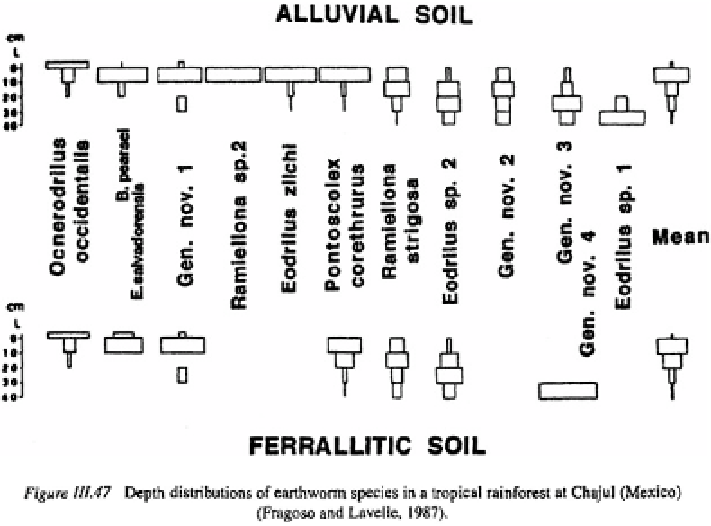Agriculture Reference
In-Depth Information
Seasonal variation
Most earthworm populations have clear seasonal patterns of activity or breeding. Such
periods generally reflect changes in any one of the major micro-environmental parame-
ters that determine function,
i.e.,
moisture, temperature and food availability. As a result,
activities among coexisting species from different ecological categories are not necessarily
synchronous (Phillipson
et al.,
1976). The type of drought resistance behaviour (
i.e.,
escape
towards deeper horizons with high moisture content, quiescence or true diapause) also
affects seasonal activity. In populations of
Martiodrilus carimaguensis,
a Glossoscolecid
species from Colombian tropical savannas, juveniles enter into diapause early, in June,
whereas adults remain active until October, two or three weeks before the onset of
the dry season (Jimenez
et al.,
1998b).
4.3.2
TERMITES
4.3.2.1
Distribution and general biology
The termites (Order Isoptera) are a group of hemimetabolous eusocial insects allied
to the cockroaches (Order Blattodea). They occur between the approximate latitudes of 30-
51°N and 40-45°S (Wood, 1979) and are represented in all biogeographic regions (Pearce and
Waite, 1994) (Table III. 14). The order comprises more than 2,400 currently-described species
in 271 genera divided among seven families. Many species still remain to be described, par-
ticularly in the tropical and sub-tropical regions (Watson and Gay, 1991; Martius, 1994;
Eggleton
et al.,
1996). Peregrine termite species, with worldwide distributions do not exist.

